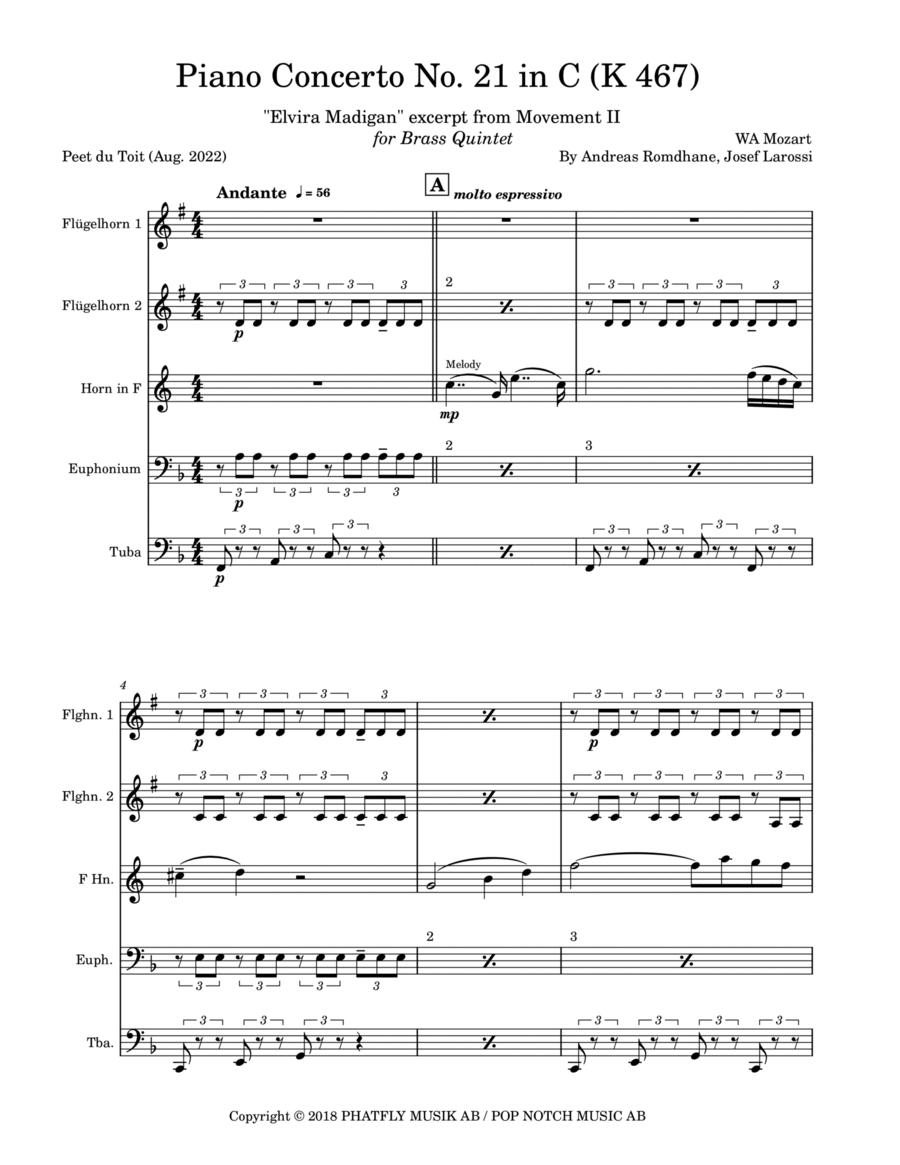Brass Quintet Euphonium,Flugelhorn,Tuba - Level 3 - Digital Download SKU: A0.1405397 By Various Artists. By Andreas Romdhane and Josef Larossi. Arranged by Peet du Toit. Classical. 10 pages. Peet du Toit #988451. Published by Peet du Toit (A0.1405397). The Piano Concerto No. 21 in C major, K. 467, was completed on 9 March 1785 by Wolfgang Amadeus Mozart.The second movement was featured in the 1967 Swedish film Elvira Madigan with Géza Anda as soloist. As a result, the piece has become widely known as the Elvira Madigan concertoHedvig Antoinette Isabella Eleonore Jensen (December 4, 1867 – July 19, 1889), better known by her stage name Elvira Madigan, was a circus performer who performed as a slack rope dancer, artistic rider, juggler and dancer. She is best known today for her romantic relationship with the Swedish nobleman and cavalry officer Sixten Sparre. Their joint death caused great sensation and the event was described in song by, among others, the author Johan Lindström Saxon [sv] in a song beginning Sad things happen, which gained great popularity.Here's a very unlikely arrangement of it for Brass Quintet, with the Horn as soloist. The other brass instruments are also conical, providing a mellow sound. I must emphasize that it would be best not to perform this piece if the intonation, correct notes, ensemble playing, and overall musicality are lacking.
